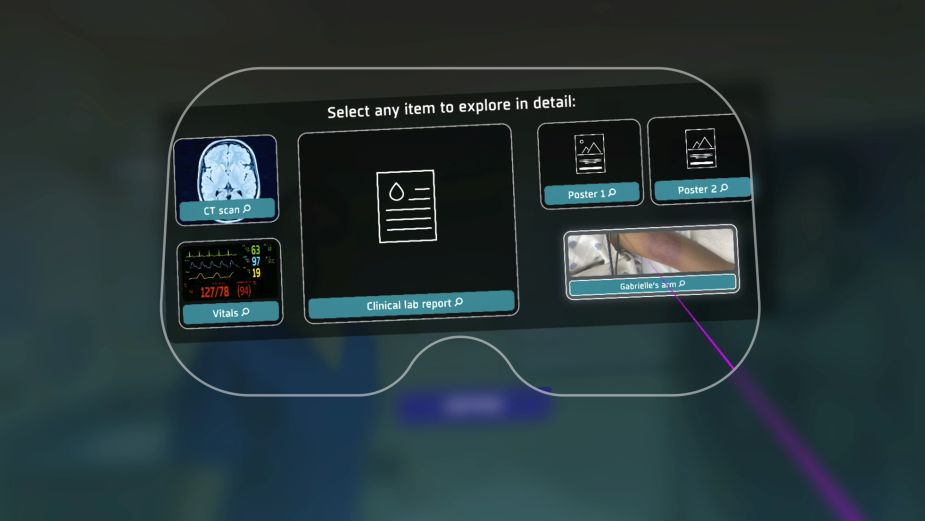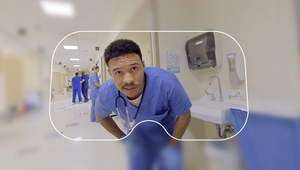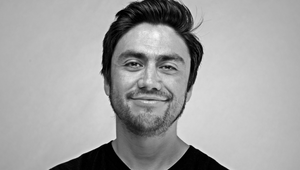
Creating a Very Real VR Experience to Help Diagnose a Very Rare Blood Disorder

For healthcare professionals (HCPs), identifying symptoms and diagnosing patients is a significant part of their responsibilities. But how can a patient receive the appropriate treatment plan, or the adequate understanding and empathy they require, if the HCP is unable to identify a rare condition or is unaware of the patient’s experience?
This is a question that McCann Health New Jersey and global healthcare company, Sanofi, have answered with their first collaboration together. For the ‘FROM VERY RARE TO VERY REAL’ project, they identified aTTP (acquired thrombotic thrombocytopenic purpura) as an extremely rare blood disorder that many HCPs are unlikely to encounter very often, if ever. aTTP develops when the immune system stops the ADAMTS13 enzyme from working properly, causing increased blood clotting, anaemia, neurologic symptoms, and renal disease.
To raise awareness of the disorder and to give HCPs experience with the symptoms and sufferers of aTTP, the IPG group health agency and Sanofi worked with VR production studio Chocolate Milk & Donuts to produce a live-action VR experience, with 360° video, actors and a realistic hospital environment. The experience allows HCPs to witness the story of a patient with aTTP from three perspectives: the patient, an ER physician and a haematologist - with interactive ‘gameplay’ that trains the HCP how to identify symptoms of aTTP as well as how to understand what the patient is going through.
aTTP also affects Black people, Black women especially, at a disproportionate level - so the experience’s awareness and empathy-raising purposes are two-fold. It shows the frustrations, difficulties and nuances of, not just being diagnosed with a rare condition, but with the process of obtaining a diagnosis and treatment as a Black patient.
To discuss the extensive research and consulting processes required for the scriptwriting, creating an authentic hospital environment for 3D filming and plans to bring the experience to HCPs across the US, LBB’s Ben Conway caught up with McCann Health New Jersey’s creative director, Katharine Imbro.
LBB> Which US HCP bodies/companies did you work with on this project - were there consultations with HCPs about medical accuracy etc?
Katharine> McCann Health New Jersey worked with Sanofi on the ‘FROM VERY RARE TO VERY REAL’ project. In addition to the rare blood disorders marketing team for acquired thrombotic thrombocytopenic purpura (aTTP), we consulted numerous internal and external parties to ensure the experience would be as accurate and authentic as possible.
Because research shows that aTTP disproportionately affects Black women, we took into consideration market research and even some qualitative feedback from Sanofi employees to help validate the challenges that Black patients may encounter in interactions with the healthcare system. These disparities can be especially challenging when facing a rare disease like aTTP. We also consulted an external aTTP expert. From the script to the medical details - including patient vitals, blood work, bruises and more - accuracy was essential for every part of the experience.
LBB> Where did the insight and statistics about aTTP come from? What inspired this campaign, and specifically a campaign that focuses on this disease first?
Katharine> The rarity of aTTP was part of the inspiration - few people develop aTTP, but when they do, most healthcare professionals (HCPs) have little knowledge of it, resulting in a diagnosis that is challenging to make. It can be hard for HCPs to diagnose a disease they’ve never seen. As with many rare diseases, it was strategically necessary to focus on disease before brand. If physicians can’t diagnose aTTP, they’ll never get to the point where they need to make a treatment decision. At the end of the experience, we have built in several screens that showcase brand data to help physicians understand treatment options.
LBB> How and why did you develop the idea of a VR experience - how does this raise awareness and be effective in ways that other mediums couldn’t?
Katharine> This project was born out of the desire to build empathy and understanding of the patient perspective when faced with a rare, life-threatening blood disorder that can be challenging to diagnose. We wanted to create a true-to-life experience, and the power of VR, combined with live-action, was the best medium to deliver the realism we desired.
To drive disease awareness, we developed an interactive experience that takes the viewer from the initial emergency through diagnosis to the point of making a potentially life-saving treatment decision. It engages them through three different points of view to build empathy and understanding for patients, caregivers and healthcare professionals who may face this rare blood disorder. We used a ‘learn by doing’ approach - with a unique mix of linear storytelling and user choices that helped drive the story forward.
LBB> aTTP disproportionately affects Black people and the VR experience tells the story of a Black woman seeking medical attention. How did this influence your creative decisions and messaging throughout the project? Did you consult with Black people who had similar medical experiences to capture an authentic story?
Katharine> In a disease that disproportionately impacts Black people, particularly Black women, we could not ignore healthcare disparity. Unconscious bias can pervade interactions that Black Americans have with the healthcare system. We had to handle the patient’s story with care, which made consulting with people who could provide perspective and deeper understanding from the start critical.
During the scriptwriting, we consulted a Black patient with aTTP who went through a similar experience, an aTTP expert and diversity advocates. The medical expert we consulted brought extensive knowledge not only of the disease, but also her unique perspective as a Black woman. Consulting with a real patient helped us understand how they were treated from initial symptoms through treatment in the hospital, what they overheard from hospital staff and how they felt throughout their aTTP experience. The contributions of all the consultants were critical to helping us create the most authentic experience possible.

LBB> Who did you work with to develop the VR experience? How was that process?
Katharine> We partnered with Chocolate Milk & Donuts (CM&D), a full-service VR production studio to create this VR experience. Creating this experience was essentially two large projects in one: a live-action video production and a virtual reality experience.
We spent a considerable amount of time on scriptwriting to ensure we had a strong story that would build awareness of the challenges faced with a diagnosis of aTTP. Also, we spent time planning and designing the interactive engagements to ensure they were both accurate and effective at moving the story forward. When considering live-action VR, we opted to shoot 360° footage, rather than 280°, to keep users fully engrossed in the emergency. Shooting multiperspective film in 360° required painstaking attention, as everything was ‘in-camera’.
After filming, it was time for the editing and getting a lock on the content before CM&D stitched the entire experience together and added the interactions. Finalising the VR included a lot of back-end programming and fine-tuning of the in-headset experience, but the final step to ensure a smooth rollout was training the reps. The entire process was iterative and intensive, but ultimately fun and rewarding too.
LBB> Did you have to cast actors and use a hospital set? What was that like?
Katharine> We put a lot of time into developing character profiles for each film role. That helped us evaluate the auditions and select the most capable talent. Rehearsals took place prior to filming to help get everyone ready. Filming in 360° meant the talent really had to know their lines and be able to deliver the medical information in a realistic manner. Because of the pandemic, filming in a hospital was going to be a challenge. We were able to find a medical training facility that looked and felt like a real hospital, which gave us the opportunity to stage multiple scenes to bring the story to life. In order to make the set feel like a true working hospital, we brought in extras to act as other patients, physicians, and hospital staff.
LBB> How does the campaign intend to get healthcare professionals to use this VR experience? How do you ensure the right people have access to VR capabilities?
Katharine> Sanofi field teams are leveraging this experience during in-person interactions with HCPs. Part of the rollout plan is to release the VR experience as a 2D interactive video on the web. This required more forethought during production to ensure the experience could be effective through more than one medium and reach a larger audience in the end. Currently, the experience is being shared in small group meeting settings. In the future, this experience will be featured at conventions nationwide through the end of 2022.
LBB> How long did the project take to be fully realised? And what was the hardest challenge you faced? How did you overcome it?
Katharine> The original idea was to tell the story of this rare disease from the patient’s perspective which grew and evolved into a full VR experience that took about a year to come to life. The hardest challenge was also the greatest reward - we were learning and doing simultaneously. From crafting the script, executing the 360° live-action production and designing the UX and UI to strategising how to deploy the VR, it was a detailed and time-consuming process in which the team was always learning. We powered through, collectively striving and committing to creating the most authentic and meaningful experience we could.
LBB> Anything else you would like to add?
Katharine> We are very proud of this VR experience. Our ultimate goal is to help share the experience of these patients with physicians so that they may be better equipped to diagnose this rare blood disorder in a real-world setting.













